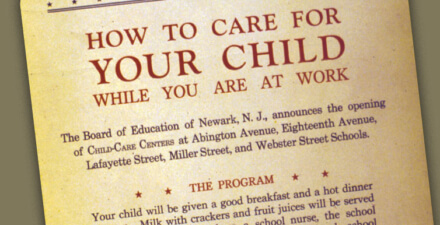Brad DeLong: Worthy reads on equitable growth, April 11–18, 2020
Worthy reads from Equitable Growth:
- This seems to me to be 100 percent completely right. Read Jason Furman, “Dealing with the U.S. economic & public health effects of the coronavirus recession compassionately & with an eye on a strong recovery,” in which he writes: “In an economy where consumer spending accounts for 70 percent of GDP, steeply declining aggregate demand is a disaster in the making. The best way to support consumer spending is for the government simply to write checks to individuals. The question for policymakers is not whether, but when and how much … We [must] not allow administrative constraints to slow or prevent the distribution of money at a time when speed is of the essence. Many federal and state agencies suffer with antiquated information technology and are not well-suited to making significant changes to programs at a rapid pace. There are very good ideas, for example, for precisely targeting increased Unemployment Insurance benefits based on income and other factors. But for now, I think Congress took the right approach of simply adding $600 to every weekly benefit check for up to four months. Unemployment benefits will need to be extended, and the next legislation can be refined to include greater complexity in how we provide aid … Far and away the most important economic issue at this moment has been whether to expand and extend the shutdowns across the country due to grave public health concerns … The right question to ask is whether, by taking costly measures now—in particular, preserving social distancing by extending the shutdown to every state—and for longer periods of time, we can avert far more costly measures down the road”
- Let us take a step back and remember just how large a “lost generation” was generated by the failure to prioritize employment recovery after 2009. Read Jesse Rothstein,” Great Recession’s ‘lost generation’ shows importance of policies to ease next downturn,” in which he writes: “he damage suffered by young workers in recessions lasts throughout their careers. Those who enter the labor market during recessions have permanently lower employment and earnings, even after the economy has recovered. This long-term scarring argues not only for quicker and stronger action to counter recessions when they occur but also for putting in place policies that can be automatically triggered at the first signs of a recession to limit its depth and duration. The Great Recession was the worst downturn since the Great Depression … Unemployment rose by 6.5 percentage points and took nearly 10 years to get back to its prerecession level. Job losses amounted to 8.7 million. Perhaps more importantly, the prime-age employment rate, which measures the percentage of people aged 25–54 who are employed, fell by more than 5 percentage points to its lowest level in 25 years and, despite continuing tightening in the labor market, has not quite fully recovered after 10 years. And yet, the long-term damage, while less visible, will cause more financial and career losses to cohorts of workers who entered the labor market during this period.”
Worthy reads not from Equitable Growth:
- This is the start of what looks to be a very useful ongoing series. I am going to keep track of this as I try to grasp what is going on. Read Michael Ettlinger and Jordan Hensley, “COVID-19 Economic Impact By State,” in which they write: “Even before governments had required widespread business closings, by mid-March almost every state showed at least small job losses. The data on the labor market impact of COVID-19 has been trickling in. Unemployment insurance (UI) claims have been reported on a weekly basis—with over 18 million in the three weeks through April 11. On April 3 we saw the Bureau of Labor Statistics (BLS) national report showing 701,000 jobs lost as of the survey taken the week ending March 14. Individual states have been releasing their state reports, but today marks the first release by BLS for all states. Below are a set of interactive charts and maps that allow for the selection of and comparisons between states using the BLS and latest UI claims data. It is important to note that as of the week for which the BLS data apply no state had implemented full stay-at-home orders and wide-spread business restrictions had yet to take hold. Yet, the impact of COVID-19 was already apparent. Map 1 compares states in the percent change in the number of jobs by state between the February and March surveys.”




